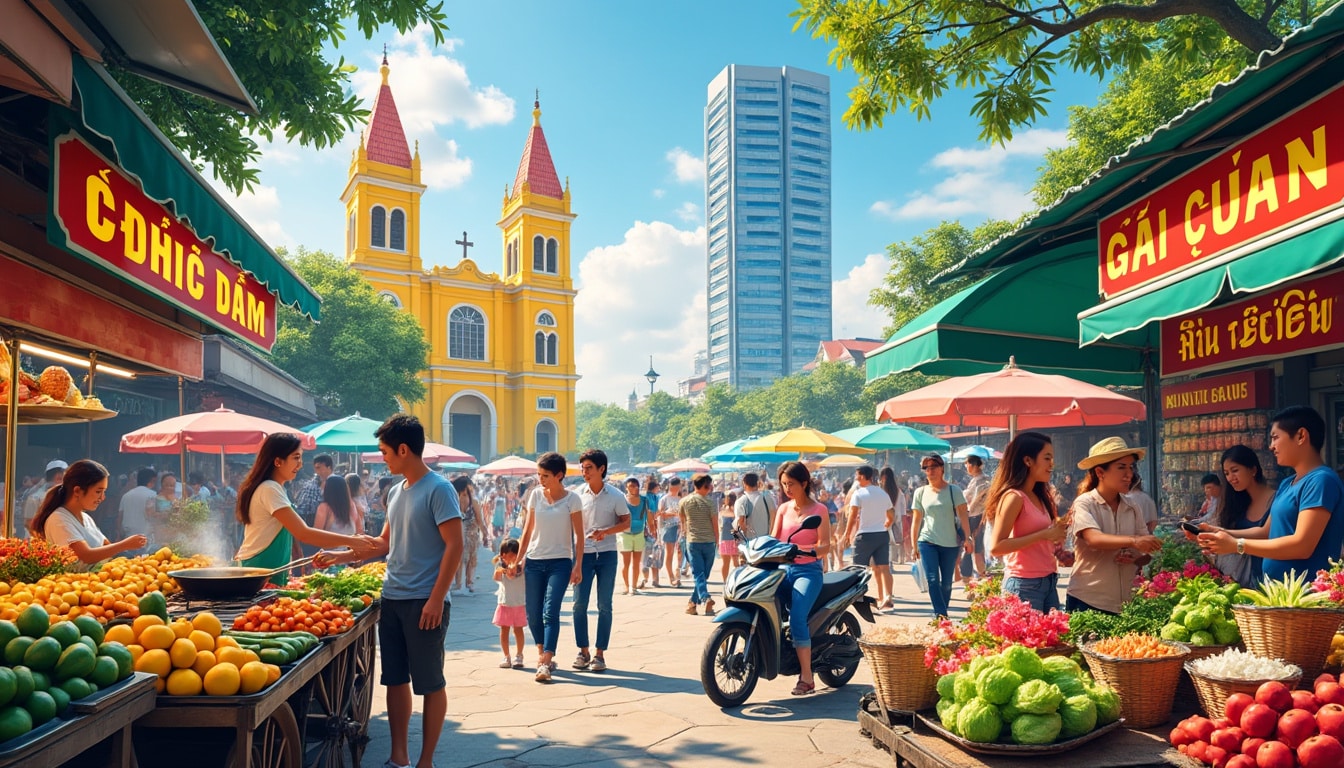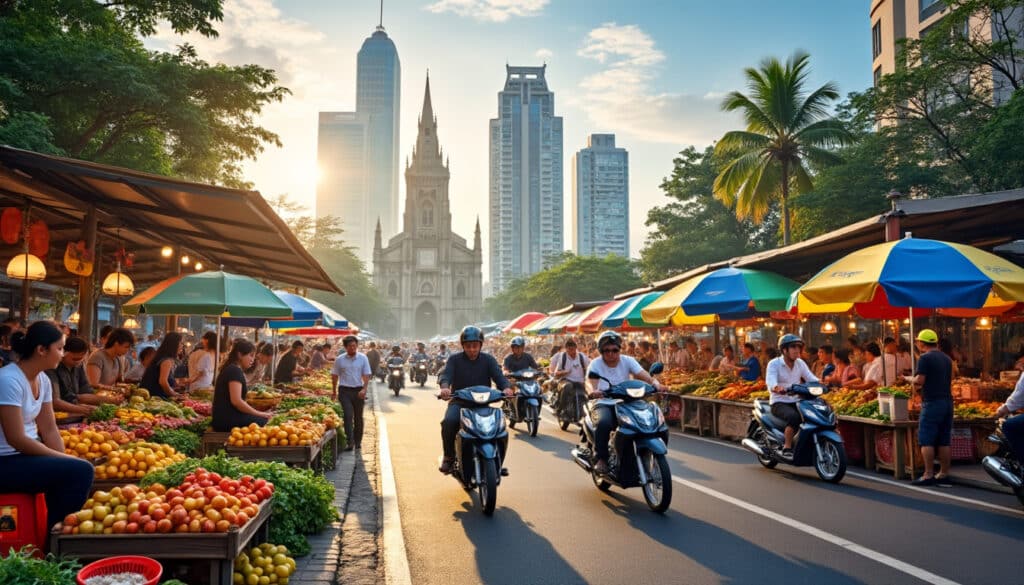In a world filled with profoundly influential leaders, Ho Chi Minh stands as a towering figure who shaped not only Vietnam but commanded attention internationally. The legacy he left behind continues to resonate in Ho Chi Minh City and across Vietnam, influencing modern development, culture, and politics. From his revolutionary exploits to his role in Vietnam’s independence, each facet of Ho Chi Minh’s life adds a distinct layer to his extraordinary story.
Early Life and Education of Ho Chi Minh
Born as Nguyễn Sinh Cung on May 19, 1890, in the village of Hoàng Trù, Ho Chi Minh’s formative years set the stage for his future revolutionary path. Growing up in the Kim Liên village, Nghệ An Province, young Nguyễn adopted the name Nguyễn Tất Thành, meaning ‘Nguyễn the Accomplished,’ reflecting his father’s aspirations for him. Early on, Ho Chi Minh displayed a remarkable aptitude for learning, mastering Chinese script—a skill that later aided his political career.
His education was not confined to traditional boundaries. With a cultural landscape as diverse as Vietnam’s, the foundation he received included a grasp of French—a language taught at the Lycee he attended, echoing Vietnam’s colonial ties with France. This formal education, however, was just a fragment of his broader scholarly journey. His apprenticeship at the Duc Thanh School and subsequent years in France and the United States exposed him to diverse ideologies, fortifying his resolve for Vietnamese self-determination.
Ho Chi Minh’s global excursions between 1911 and 1917 were pivotal. While working aboard ships and traveling extensively, he was exposed to a multitude of cultures and political doctrines. These years enriched his perspective, igniting his passion for revolution. While in France, he developed bonds with socialist peers, setting the groundwork for his future endeavors in the Communist Party.
| Year | Location | Activity |
|---|---|---|
| 1890 | Hoàng Trù | Born Nguyễn Sinh Cung |
| 1911-1917 | Global | Worked aboard ships |
| 1919-1923 | France | Increased political activity |

Ho Chi Minh and the Path to Independence
The journey to Vietnam’s independence is synonymous with Ho Chi Minh’s determined pursuit for liberation. The culmination of his efforts was a resounding declaration of independence from French colonial rule on September 2, 1945. This monumental event marked the establishment of the Democratic Republic of Vietnam, a turning point in the nation’s history.
The August Revolution in 1945 exemplifies Ho Chi Minh’s strategic leadership. As the Axis powers faced defeat in WWII, Ho seized the opportunity to rally support from domestic and international fronts. Despite facing considerable opposition, his leadership style thrived on tenacity and an indomitable spirit.
Ho’s endeavors in the north laid a robust foundation, although replicating such success in the politically fragmented South presented challenges. The South’s distinct political landscape required careful maneuvering, which Ho approached with calculated patience and resilience. His adept leadership fostered a revolutionary movement that, despite setbacks, never waned in ambition.
- 📜 1945: Declaration of Vietnam’s independence under Ho Chi Minh’s leadership.
- ⚔️ Challenges: Major political divisions in the South persisted, complicating national unity.
- 🌍 Global Recognition: Ho’s stature grew internationally, with monuments and tributes erected worldwide.
The Influence and Legacy of Ho Chi Minh
Ho Chi Minh’s influence extends beyond Vietnam into the broader canvas of 20th-century history. Recognized as one of Time Magazine’s 100 most pivotal figures of the century, his Marxist-Leninist views resonate among political theorists and historians. The ‘Ho Chi Minh Thought’ reflects a spectrum of socialist ideals, although it was later nuanced by more Stalinist interpretations.
The legacy he fashioned is evident in various facets of modern Vietnam—cities, schools, and institutions bear his name, a testament to enduring admiration. Particularly prominent is Ho Chi Minh City, formerly known as Saigon. This bustling metropolis is a living reminder of his impact, symbolizing Vietnam’s rapid development, highlighted by advancements from entities like VinGroup and Techcombank.
Ho Chi Minh has also served as a muse for artists and revolutionaries worldwide. His life story delivers lessons in resilience and dedication, encouraging those aspiring to effect positive change in their communities. This admiration transcends political affiliations, evidenced by statues and memorials found in unexpected global locales, including Russia.
| Tribute | Symbolism |
|---|---|
| Ho Chi Minh City | Development and progress |
| International Monuments | Global recognition |
Cultural Impact and Popular Anecdotes
Beyond politics, Ho Chi Minh’s cultural footprint is significant. Known not only for his leadership, but also for his poetic contributions and journalistic ventures, he displayed a profound understanding of the power of words. His writings cultivated a sense of national identity and unity among the Vietnamese populace. As a polyglot, his linguistic skills extended beyond Vietnamese to French, English, Russian, and Chinese, underscoring his intellectual breadth.
His early travels, reportedly spanning cities like New York and London, contributed to his cultural richness, revealing a fascinating intersection of Western and Eastern influences. Stories of his life abroad resonate with his image as a well-traveled statesman who could navigate complex geopolitical landscapes. His time in France was instrumental, where politicization took root amidst socialist circles.
- ✈️ Extensive Travels: His global experiences contributed to his revolutionary ideologies.
- 🖋️ Cultural Icon: Ho Chi Minh’s writings and poetry remain culturally significant.
- 🌐 Linguistic Prowess: Mastery of multiple languages facilitated his diplomatic efforts.
A Lasting Influence on Vietnam Today
In today’s vibrant Vietnam, Ho Chi Minh’s spirit and influence are palpable. With entities like Vietnam Airlines and FPT Corporation leading innovations, the nation’s progress reflects his early visions of a united, strong, and independent Vietnam. Projects spearheaded by Phu My Hung Development and Saigon River Cruises epitomize the blend of modernity with cultural heritage.
The continued reverence for Ho Chi Minh is evident in both public spaces and academic spheres, where his philosophies are studied and revered. His vision is intertwined with the modern architectural marvels that characterize Ho Chi Minh City, a city bustling with life and activity. Developments backed by key institutions like Techcombank ensure Vietnam’s prosperity along with keeping its cultural ethos intact.
Moreover, Ho Chi Minh’s endearing legacy as ‘Uncle Ho’ remains a cornerstone in the Vietnamese psyche—a symbol of perseverance and hope. The tourism industry, bolstered by the Ho Chi Minh City Tourism board, thrives on this rich historical tapestry, attracting inquisitive visitors keen to understand the leader’s formidable influence.
| Modern Influence | Impact |
|---|---|
| Vietnam Airlines | Connectivity and modernization |
| FPT Corporation | Technological advancement |
FAQ about Ho Chi Minh
- What is Ho Chi Minh best known for?
Ho Chi Minh is renowned for leading Vietnam’s fight for independence from French colonial rule and establishing the Democratic Republic of Vietnam in 1945. - What languages did Ho Chi Minh speak?
He was adept in multiple languages including Vietnamese, French, English, Russian, and Chinese, showcasing his extensive linguistic skills. - How did Ho Chi Minh influence modern Vietnam?
His vision has significantly shaped Vietnam’s political and cultural landscape, with cities like Ho Chi Minh City embodying his dream of a modern, progressive nation. - Are there any notable monuments dedicated to Ho Chi Minh?
Yes, there are numerous statues and monuments worldwide, particularly in Vietnam and Russia, celebrating his legacy as a leader. - What role does Ho Chi Minh City play today?
Ho Chi Minh City is a thriving metropolitan center reflecting Vietnam’s development trajectory, blending modern innovation with rich historical significance.
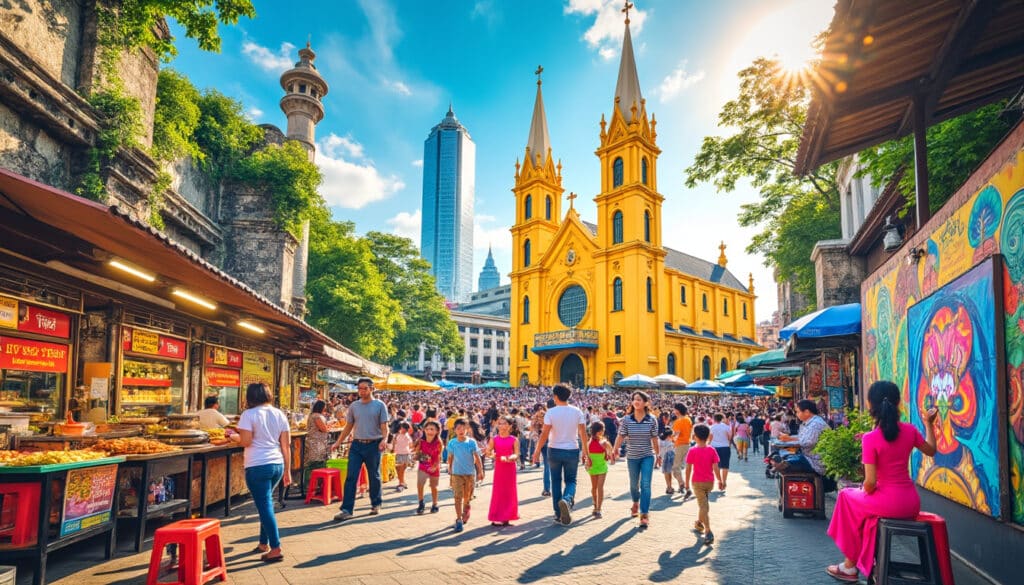
Fun Facts & Curiosities About Ho Chi Minh
Ho Chi Minh City, also known by its former name Saigon, is not just a bustling modern metropolis but a city filled with curious contrasts and intriguing historical narratives. From its storied past as the capital of South Vietnam to…
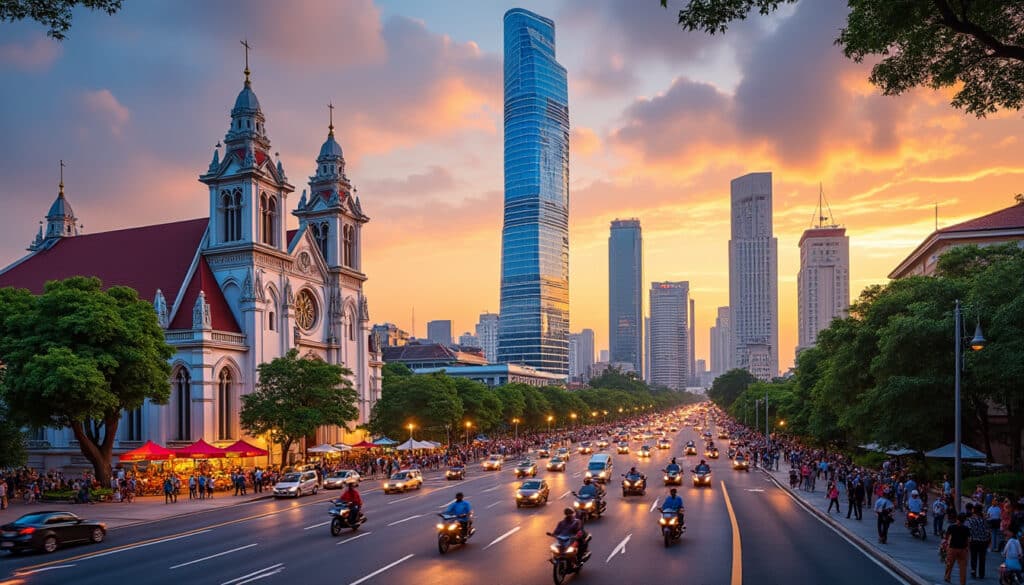
Architecture and urban features of Ho Chi Minh
Ho Chi Minh City, the bustling economic heart of Vietnam, is a captivating blend of the old and the new, a testament to its ever-evolving architectural landscape. From its historical roots as Saigon, with traditional Vietnamese and French colonial influences,…

Demographics and geography of Ho Chi Minh
Ho Chi Minh City, formerly known as Saigon, stands as a vibrant testament to Vietnam’s blend of tradition and modernity. Nestled between the fertile lands of the Mekong Delta and the bustling southeast, it pulsates with life and energy. As…
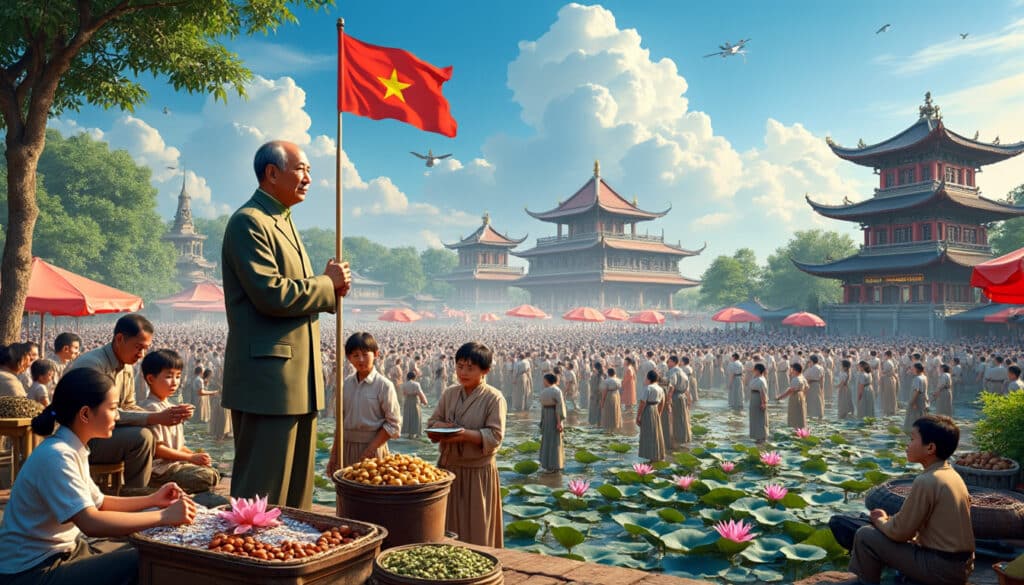
Ho Chi Minh is a name that resonates deeply within the fabric of Vietnam’s history, symbolizing the relentless spirit of independence and nationalist fervor. Known for leading his nation through tumultuous times, Ho Chi Minh was not only a revolutionary…
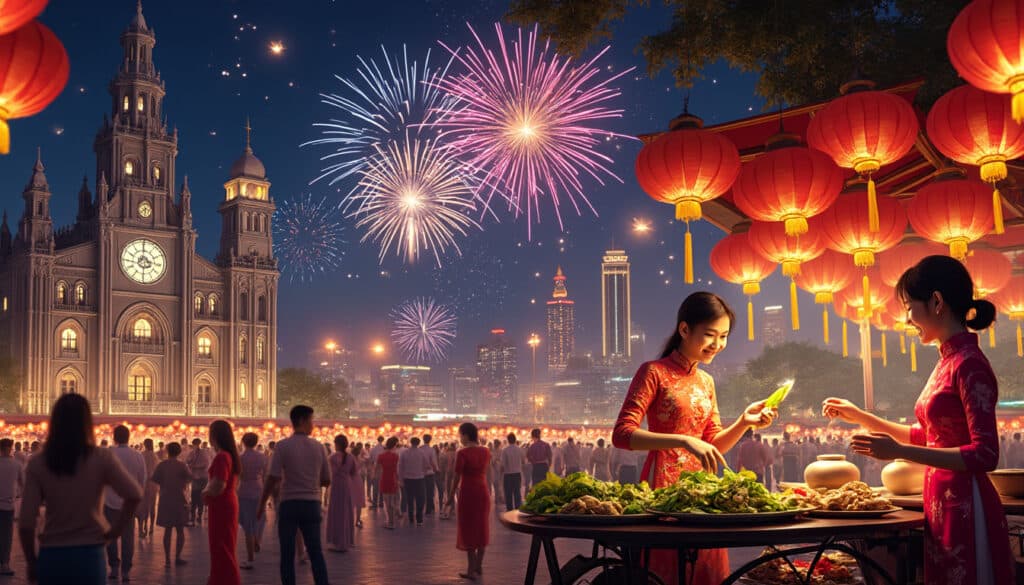
Holidays and celebrations in Ho Chi Minh
Ho Chi Minh City, with its rich tapestry of cultural influences and historical significance, stands as a beacon of celebration in Vietnam. Here, traditions old and new intermingle, creating a vibrant landscape of festivities. From the pulsating energy of the…

Language and spelling of Ho Chi Minh
In the bustling streets of Ho Chi Minh City, language serves as both a bridge and a barrier. The city’s unique linguistic landscape, a product of its rich history and rapid modernization, reflects the dynamic interplay between tradition and change.…
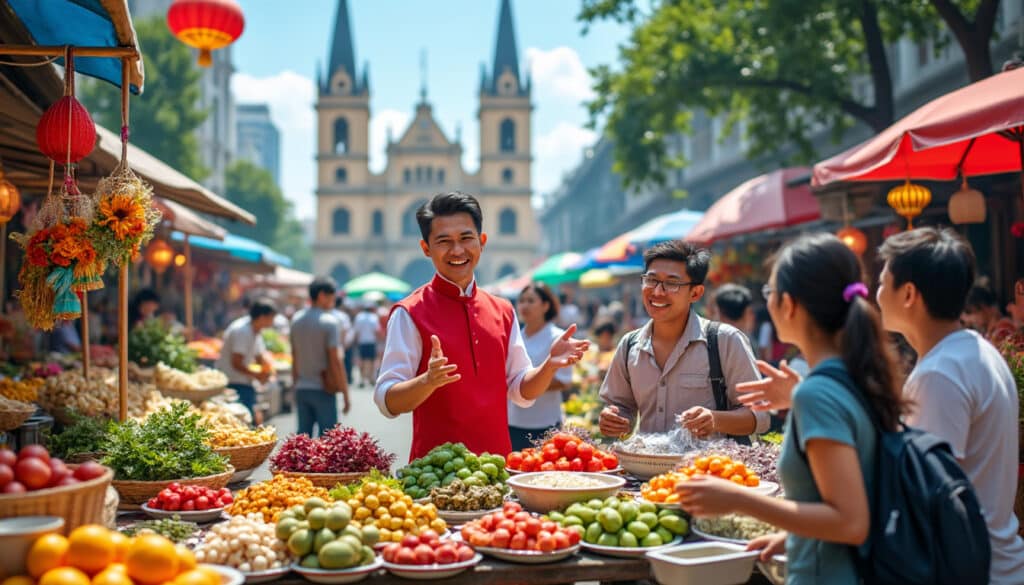
Local tips for tourists in Ho Chi Minh
Ho Chi Minh City, a bustling metropolis teeming with energy, is a gem in Southeast Asia that offers an intoxicating blend of history, culture, and modernity. From its vibrant street markets and delicious street food to its historical sites and…
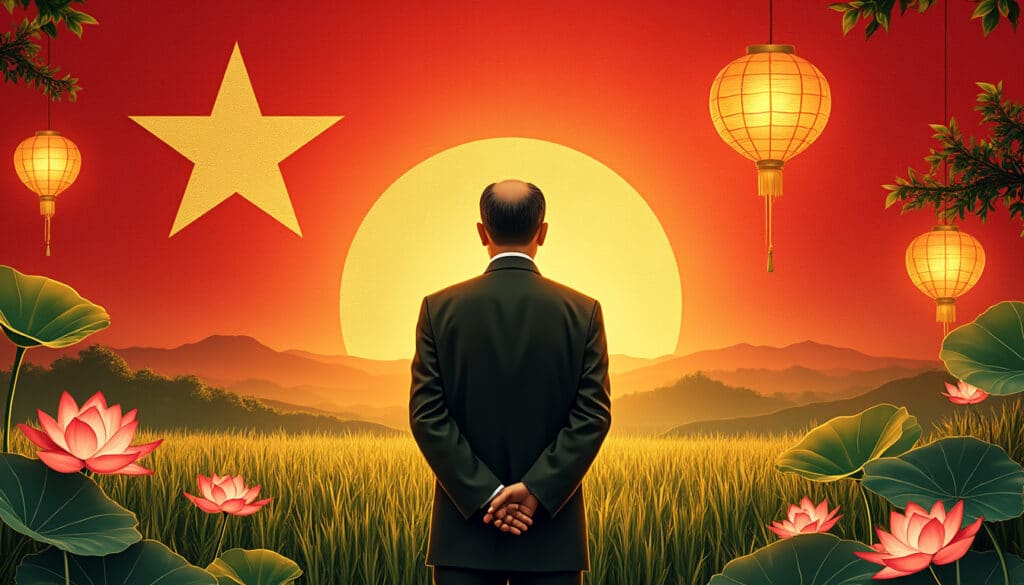
Names, flags, and identity of Ho Chi Minh
The legacy of Ho Chi Minh is deeply interwoven with the identity and history of Vietnam. Known by many names and represented by various flags throughout his life, Ho Chi Minh remains an iconic figure whose influence extends beyond Vietnam.…
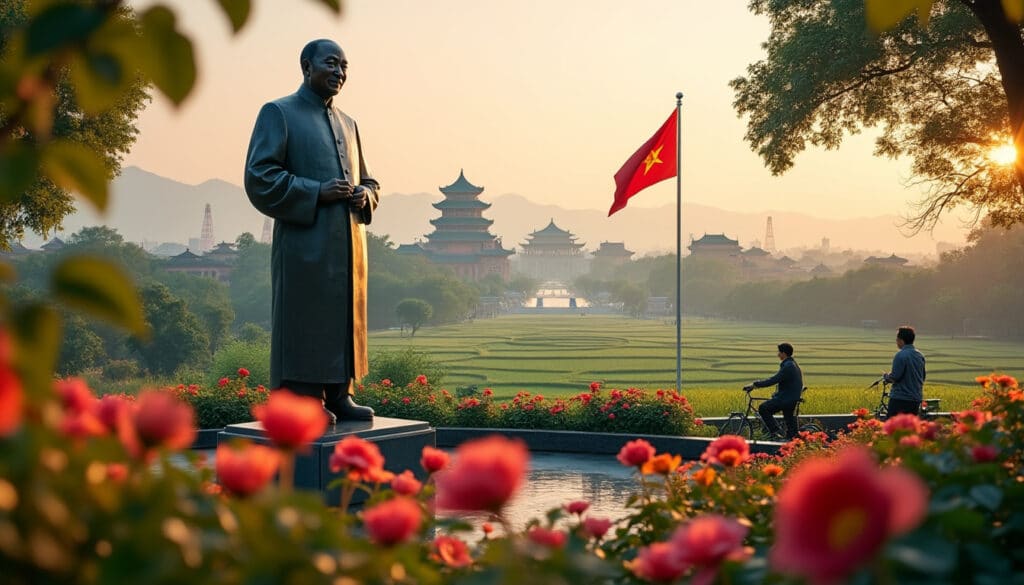
Reputation and identity of Ho Chi Minh
In the heart of Vietnam, the legendary figure of Ho Chi Minh continues to captivate minds, dominating discussions related to national identity and the nation’s storied past. An icon of resilience and strategic acumen, his image is immortalized in everything—from…
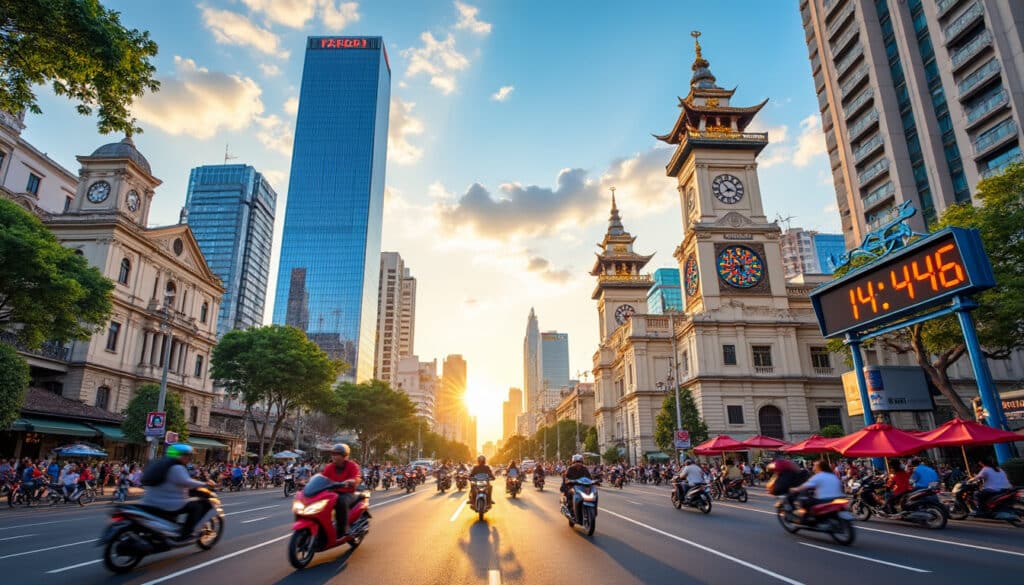
Time and time zone in Ho Chi Minh
Ho Chi Minh City, a bustling metropolis in Vietnam, is a city that never sleeps, where the hum of scooters is the soundtrack to daily life and the aroma of strong coffee permeates the air. It’s a place where time…
Unusual facts and social issues in Ho Chi Minh
Ho Chi Minh City, often referred to as Saigon, is a vibrant metropolis teeming with history, culture, and an array of fascinating quirks. Despite its rapid modernization, the city retains an intricate blend of past and present, where unique facts…
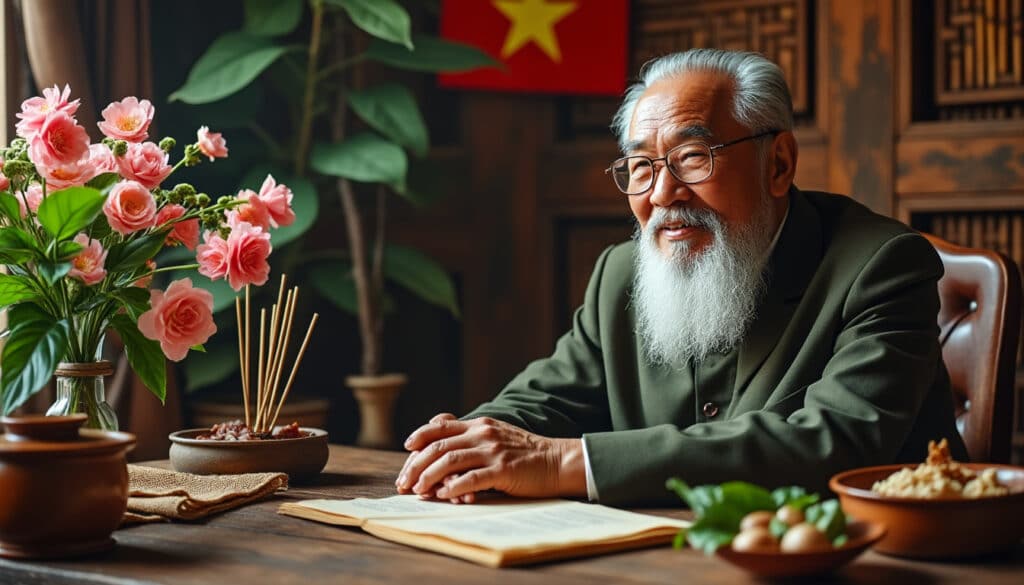
What does Ho Chi Minh look, smell, feel like?
Ho Chi Minh City, often referred to as Saigon, is a bustling metropolis in southern Vietnam that offers an unparalleled sensory experience. From the sleek skyline that reflects its modern aspirations to the fragrant aromas that fill the vibrant streets,…

